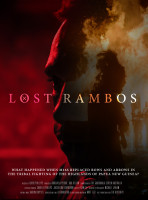Lost Rambos Filming Locations

Where was Lost Rambos filmed? Lost Rambos was filmed in 1 locations across Papua New Guinea in the following places:
Lost Rambos Filming Locations
Papua New Guinea, in the southwestern Pacific, encompasses the eastern half of New Guinea and its offshore islands. A country of immense cultural and biological diversity, it’s known for its beaches and coral reefs. Inland are active volcanoes, granite Mt. Wilhelm, dense rainforest and hiking routes like the Kokoda Trail. There are also traditional tribal villages, many with their own languages.
Lost Rambos (2019)
Although tribal fighting has long been present in the Papua New Guinea highlands, the influx of modern automatic weaponry in the 1990s turned local disputes into swift lethal exchanges which threatened to permanently reshape highlands culture. Bootlegged copies of the American film Rambo circulated in remote communities, becoming a crude tutorial on the use of such weaponry. The influence of the film was so pronounced that the term Rambo is now used in Papuan dialects to describe hired mercenaries who are paid to support local combatants in violent tribal disputes. The services of Rambos were suddenly in high demand as a variety of M16s and Indonesian military weaponry found its way down the Sepik River through swap-laden smuggling routes. The automatic machinery has had a chilling effect on dispute resolutions. Obtaining an automatic rifle can become the ultimate ticket to regional power and tribes are going to great lengths to buy into this new system. The cultural knowledge of tribal fighting, which had been proudly handed down for tens of thousands of years, has exceedingly been replaced by a handful of steel machinery. Lost Rambos explores the impact and evolution of fighting through the recent history of Kompiam, a town buried deep in the northern region of the PNG highlands in Enga Province, a region renowned for intense tribal disputes. In recent years Kompiam has experienced several tribal fights with around 80 recorded deaths, not to mention destruction of local infrastructure and hundreds of houses burnt to the ground. Two tribes remain in active dispute with the Tinalapin tribe still occupying the land of its enemy the Sambe. This film unpacks the conflict by featuring voices from both tribes, including alternate viewpoints within the leadership of the Tinalapins. Characters include the War Leader (Pyaren Pyato) who convinced the tribe to fight, the head Warrior (Goden Lapyale) who led the fighters into battle and a Peacemaker (Joseph Lakai) who returns for the first time since the fighting began with a message of peace for his tribe. We also experience an alternate view from a Sambe family who have been displaced by the war, and are struggling to survive in exile having lost their land and many young tribesman. The four viewpoints allow for a nuanced perspective on fighting pushing beyond the stated causes of tribal fighting which is often blamed on disputes over land, women and pigs. Instead this film subtly interrogates the deeper causes alongside the impact of the weaponry, exploring the lack of government intervention and security services, the profound cultural value given to family loyalty, and the vast gender imbalance in the traditional highlands hierarchy. Lost Rambos unpacks tribal conflict from all angles to explore the complexities of a traditional practice rapidly drawn into the modern day.
